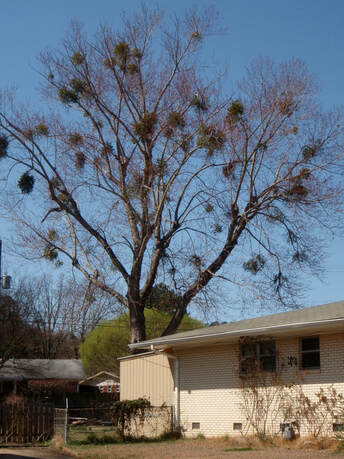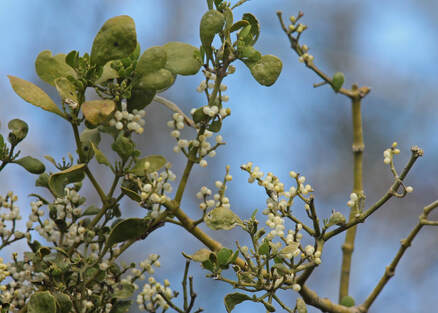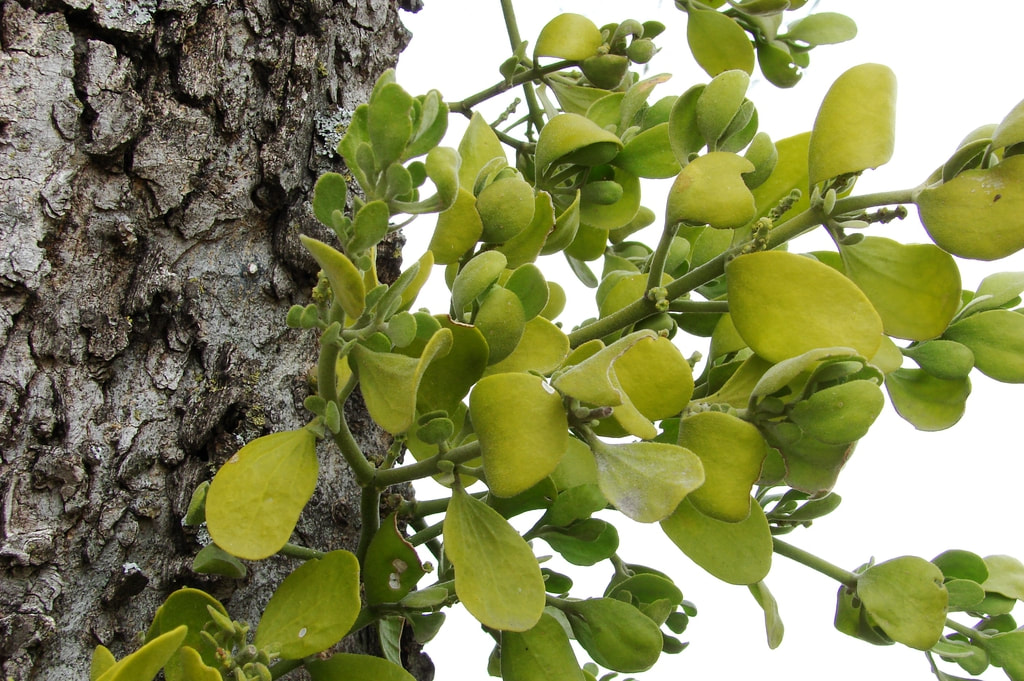|
By Joanne K., Extension Master Gardener Volunteer, Pitt County Arboretum
Mistletoe has a long history in folklore. In a Norse legend, Balder, the son of Frigga, the goddess of love, is killed by an arrow fashioned from a mistletoe sprig. Frigga's tears fell on the mistletoe, turning her tears into white berries. Frigga decreed that mistletoe should never cause harm again and should only be used to promote love and peace. This led to the practice where enemies meeting under mistletoe had to disarm, exchange a kiss of peace, and call a truce for the day. Ancient Greeks thought the mistletoe had healing properties, using it as a remedy for various disorders, as well as an aphrodisiac. The Druids thought mistletoe was a sacred plant because it doesn't grow from roots in the ground. The Druids wore mistletoe for good luck and protection from evil spirits. Mistletoe over a doorway allowed only happiness to enter the house. In the 1700s in northern Europe, kissing balls with mistletoe hung in doorways. A single lady giving a kiss under the mistletoe increased her chances of marriage. In England, young girls placed a mistletoe leaf under their pillows to dream about the man they wanted to marry.
If you want to rid your tree of mistletoe, you must prune the infected branches in winter. Cutting off the plant does not destroy the parasite that is the harmful pest.
When hanging mistletoe over the holidays, be careful to keep the plant and its poisonous berries out of the reach of children and pets. Also avoid hanging it above any heat-producing source, which will cause it to dry out much faster and become a fire hazard. Google 'mistletoe lore' for more of the legends about this fascinating ancient plant. Photos are from the NCSU plant toolbox. 1. mistletoe_031110_LIT_j2u5NyxjcdwH Fall Tree Jim Robbins CC BY-NC-ND 4.0 2. Phoradendron_leucarp_SnCegNDnRhzu.jpeg Leaves and Flower Mary Keim CC BY-NC-SA 2.0 3. Phoradendron_leucarp_ukWXqjzH3XLU Leaves Loadmaster (David R. Tribble) CC BY-SA 3.0
0 Comments
Leave a Reply. |


